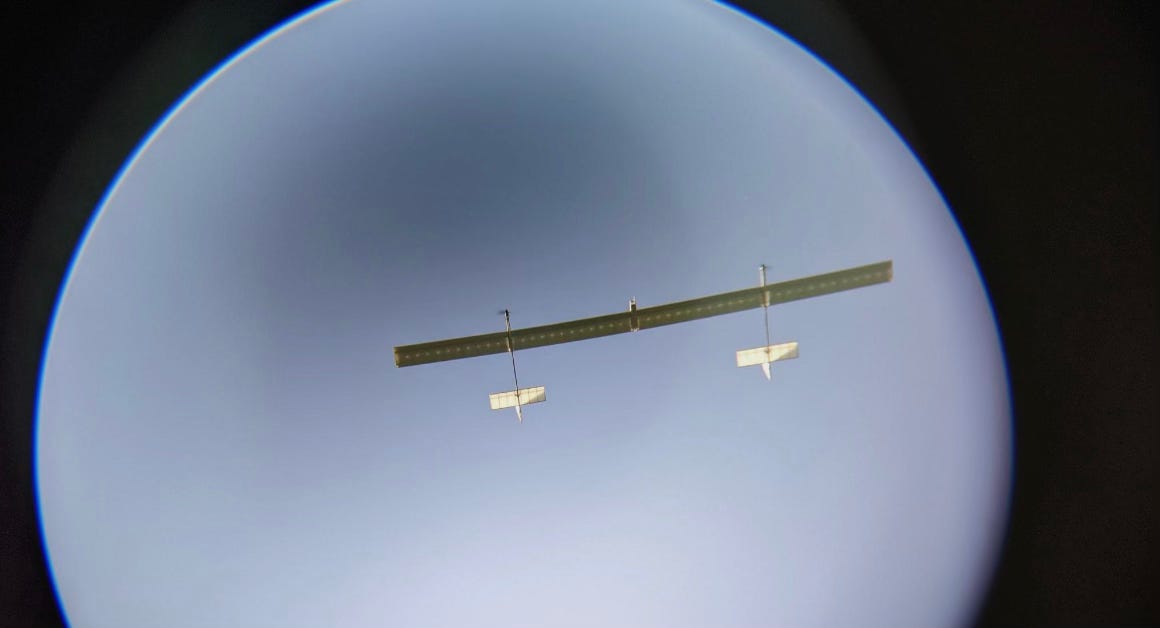Radical is an aerospace company building autonomous, solar-powered airplanes to offer decentralized computational servicesfrom the stratosphere. The fixed wing airplanes can be launched from spaceports and airports with special allowances and negligible launch costs for rapid deployment. Once launched, the aircrafts spiral themselves upwards to an altitude of 20km where they can either hold their position or manoeuvre according to the operator's needs without maintenance for many months. The company's first products will be focused on connectivity services and high resolution imagery.
At Radical, we are driven by the goal of revolutionising how we connect and monitor our planet. Our high-altitude, solar-powered aircraft are engineered to operate autonomously in the stratosphere, flying over targeted areas for months without the need to land. This capability allows us to provide continuous cell service, collect high-resolution imagery, and carry crucial weather and climate sensors, all while maintaining zero emissions. The potential to transform telecommunications, environmental monitoring, and many other fields is immense and exciting.
James Thomas and Cyriel Notteboom founded the company after contributing to the frontiers of aeronautics at Amazon Prime Air as a Research Scientist and Senior Hardware Engineer respectively. Today, they have been announcing their $4.5M Series Seed fundraise led by Scout Ventures with participation from Inflection and Y Combinator.
Our thesis
High altitude platforms have several advantages over LEO satellites that are rooted in their comparatively cheap launch costs, flexible and upgradeable payloads, 25x shorter distance to earth and their exceptional manoeuvrability.
Cell towers in the sky: HAPS are operating at only 20km altitude (vs. 500km for LEO satellites) and can hover above ground what optimises their ground coverage footprint with line of sight coverage over 50km+ whereas thousands of satellites would be needed in orbit for similar coverage. HAPS also have much more attractive signal attenuation (loss of signal strength over distance) and 30x less latency compared to LEO satellites. Those features allow them to transmit signal directly to hand-held devices without gigantic antennas and receivers like e.g. Starlink does. Constellations of airplanes could be meshed to balance load and to increase coverage and data transmission.
Eyes in the sky: similarly, image resolution from the stratosphere can be sub-10cm GSD (ground sample distance) with a lens diameter of only 12.2cm for visible light at fixed resolution vs. a lens diameter of 3.05m (25x larger) from orbit. The high maneuverability allows for live video coverage and near real time data transmission through a HAPS link or to a ground tower. Satellites on the other hand would have only temporal data transmission (7min for every 90min) and needs radiation hardened data storage coming at much higher prices.
Despite many failed attempts of creating similar aircrafts in the past we believe that the time is now because solar cell costs came down 10x over the last 10 years and battery performance came up from 80 wh/kg to 350 wh/kg amongst other enabling technologies accelerating drastically (nano coatings for wings; autonomous flight systems etc.).
If Radical Aero is successful in delivering a high altitude compute platform it can become a large, dual use company providing compute services with strong network effects through a software ecosystem and constellation meshing.






